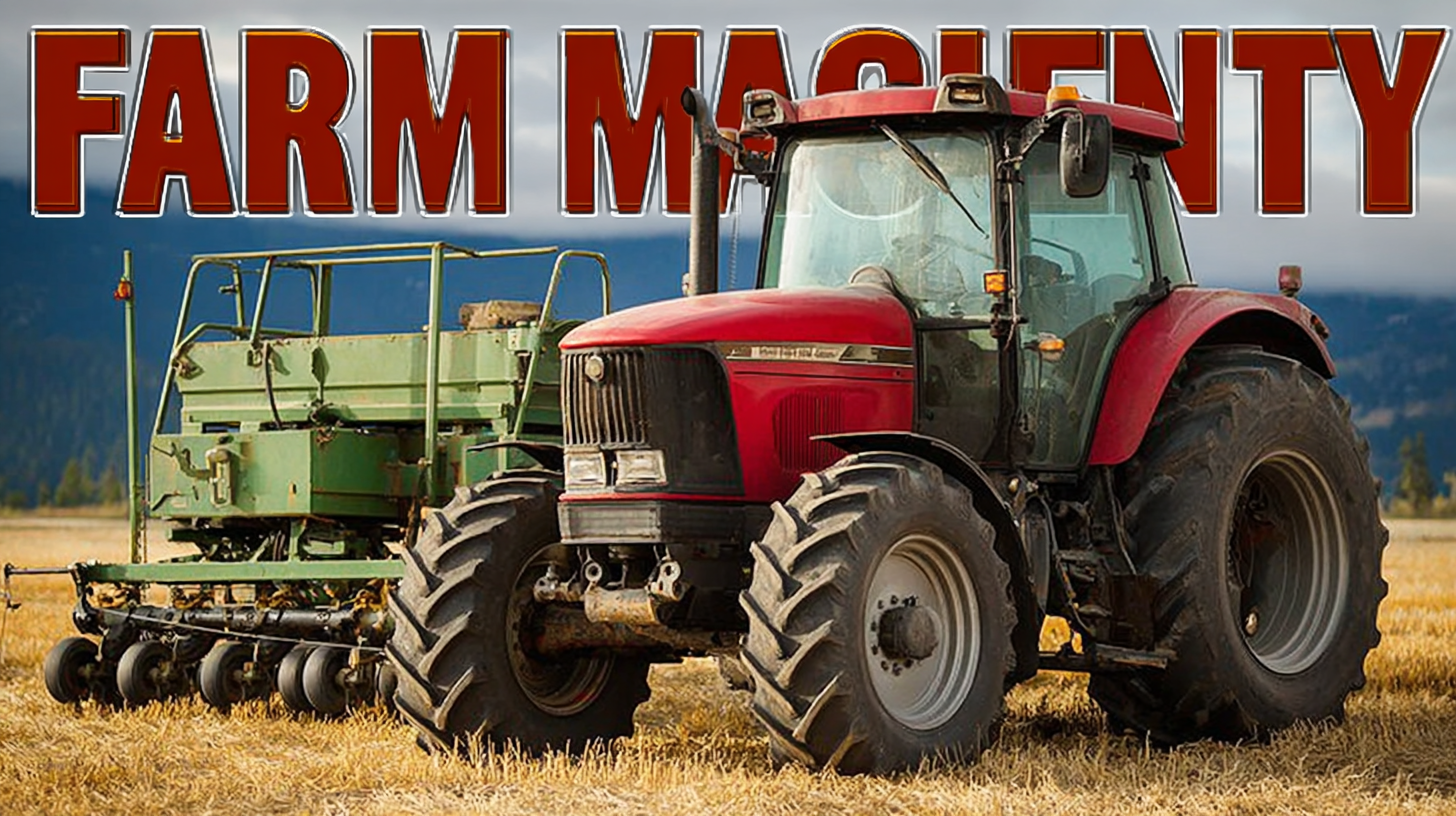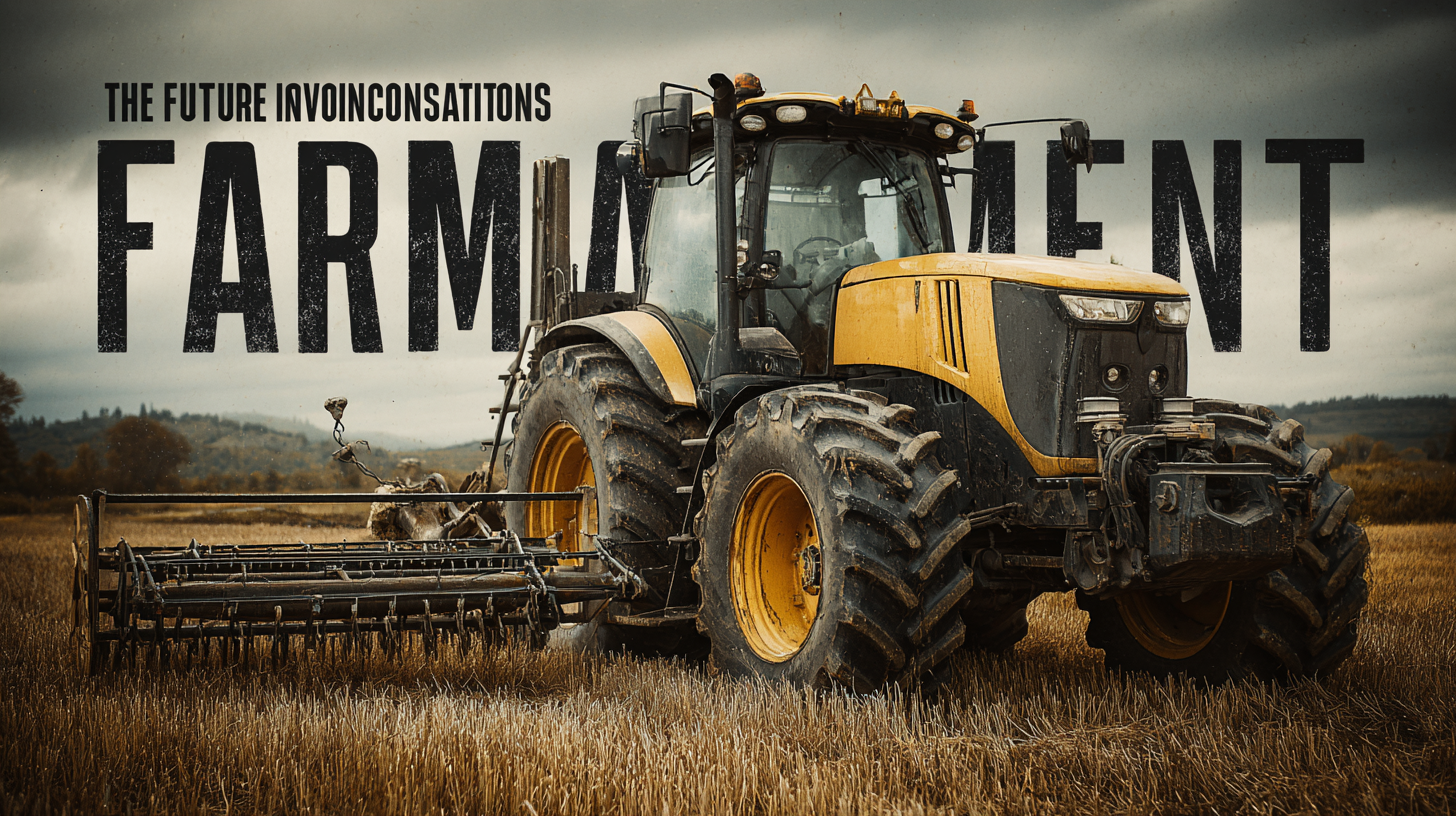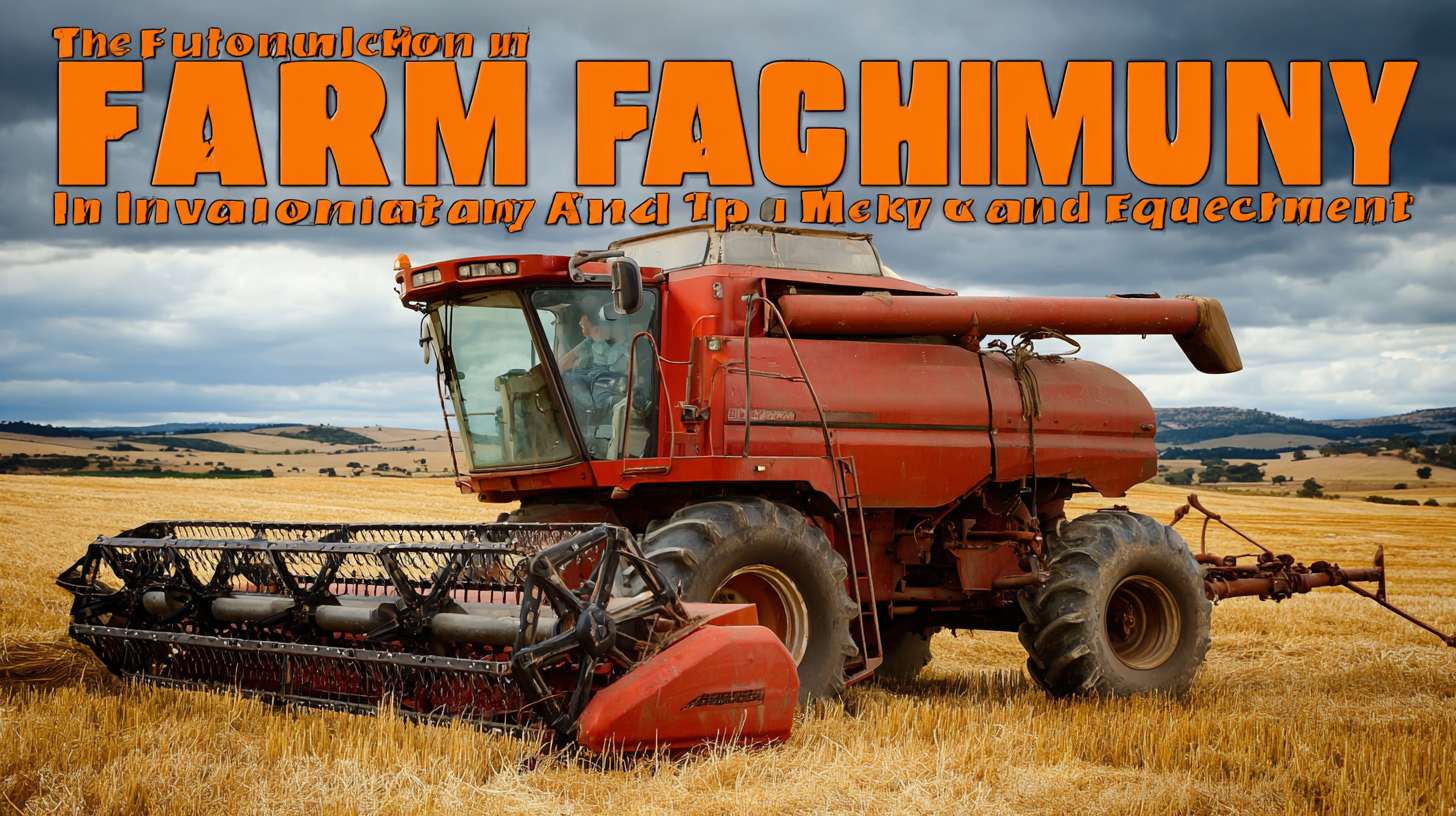As the global agricultural landscape evolves, the demand for advanced farm machinery and equipment is at an all-time high, driven by the need for increased efficiency and productivity. According to a report by Research and Markets, the global farm equipment market is projected to reach USD 247.71 billion by 2027, growing at a CAGR of 5.5%. This substantial growth signifies an urgent need for innovative solutions that can enhance farm operations and sustainability.

Focusing on quality, China's manufacturing sector has emerged as a leader in the production and export of these vital agricultural tools, enabling farmers worldwide to optimize their practices. As we delve into the future of innovations in farm machinery and equipment, it is imperative to explore how cutting-edge technologies, coupled with a commitment to craftsmanship, can revolutionize both local and global agricultural practices.
The integration of automation and AI into modern farm machinery is poised to revolutionize agriculture by 2025, enhancing efficiency and sustainability. As AI technologies become more prevalent, farmers will increasingly rely on precision farming techniques, enabling them to optimize resource use and increase yields. Reports indicate that over 70% of agriculture equipment dealers will prioritize digital strategies, including SEO, to adapt to this transformative landscape, highlighting the growing importance of technology in farming.
In 2025, the agriculture machinery market is projected to surpass $200 billion, emphasizing a significant shift towards innovative solutions such as AI-powered equipment and smart sensors. These advancements allow for data-driven decision-making, helping farmers address global challenges like climate change and food security. The technological revolution promises not only to boost productivity but also to promote sustainable practices that are essential for the future of agriculture. As farms become smarter, embracing automation will not only provide economic benefits but also foster a more sustainable approach to meeting the needs of a growing population.
As the agricultural industry grapples with climate change and resource depletion, the rise of eco-friendly equipment alternatives is reshaping sustainable farming techniques. According to a recent report by MarketsandMarkets, the global market for sustainable agriculture is projected to reach $24.1 billion by 2027, driven by the increasing demand for environmentally friendly farming practices. This shift emphasizes not only the need for innovation but also the adoption of machinery that minimizes the ecological footprint.

Eco-friendly farm machinery, such as electric tractors and solar-powered irrigation systems, is gaining traction as farmers seek to reduce emissions and reliance on fossil fuels. A study from the International Energy Agency indicates that agricultural machinery accounts for approximately 20% of greenhouse gas emissions from farming operations. By integrating renewable energy sources and optimizing equipment efficiency, farmers can significantly lower their carbon output. Technologies like precision farming and smart sensors further enhance these efforts, allowing for the precise application of resources, reducing waste, and promoting biodiversity in agricultural ecosystems.
In recent years, precision agriculture has emerged as a cornerstone of modern farming, fundamentally transforming the landscape of crop production and resource management. According to a report by MarketsandMarkets, the precision agriculture market is projected to grow from $7 billion in 2020 to over $12 billion by 2025, highlighting the increasing reliance on technology to enhance crop yields and optimize resource use. By leveraging advanced tools such as GPS mapping, soil sensors, and drones, farmers can precisely monitor field variability, allowing for tailored application of water, fertilizers, and pesticides.
Tip: When selecting precision agricultural tools, consider investing in multi-spectral imaging drones to analyze crop health. These drones can identify stresses at an early stage, enabling timely intervention and improving yield potential.
Moreover, integrating data analytics has proven invaluable in maximizing efficiency. The utilization of big data allows farmers to gain insights into weather patterns, soil conditions, and crop performance, enabling informed decision-making. According to a study by the USDA, precision agriculture techniques can increase crop yields by up to 20%, greatly benefiting both productivity and sustainability.
Tip: Utilize decision support systems (DSS) to synthesize data collected from various sources, helping you determine the best planting strategies and resource allocation for your crops.
The agricultural sector is on the brink of a technological revolution, and data analytics is set to play a pivotal role in shaping the future of farm machinery and equipment. By harnessing the power of big data, farmers can gain insights into crop performance, soil health, and weather patterns, enabling them to make informed decisions about machinery purchases and utilization. This predictive capability not only enhances operational efficiency but also reduces costs by ensuring that the right tools are employed at the right times.
Moreover, data analytics facilitates the integration of smart technologies such as IoT devices and machine learning algorithms into farm equipment. These innovations enable real-time monitoring and performance optimization, allowing for adaptive responses to dynamic agricultural conditions. For example, tractors equipped with sensors can adjust their settings based on soil moisture levels, maximizing yield while minimizing resource wastage. As farms become more data-driven, the future of machinery development will undoubtedly align closely with advancements in analytics, leading to smarter, more sustainable farming practices.
As we look toward 2025, the integration of robotics into farm operations is poised to revolutionize the agricultural landscape. Emerging technologies, such as autonomous tractors and drone technology, are set to enhance efficiency and productivity on farms. According to a report by the International Federation of Robotics, the agricultural robotics market is expected to reach $12 billion by 2025, signifying a robust growth propelled by the need for innovative solutions to labor shortages and increased food production demands.
Farmers can optimize their operations by adopting robotic systems for precision farming. Innovations like automated planting and harvesting machines not only reduce labor costs but also minimize waste and enhance crop yields. A tip for farmers considering this shift is to start small by integrating one robotic solution, such as a drone for crop monitoring, before expanding to more complex machinery. This strategic approach allows for a smoother transition to high-tech farming.
Moreover, the incorporation of AI-powered data analytics in farm machinery will enable real-time decision-making. By leveraging data from sensors and drones, farmers can monitor soil health and crop conditions more effectively. A practical tip is to invest in training for staff to adapt to these new technologies; this will ensure that the transition is not only about equipment but also about enhancing skills on the farm. Embracing these innovations can significantly boost operational efficiency and sustainability in agriculture.
